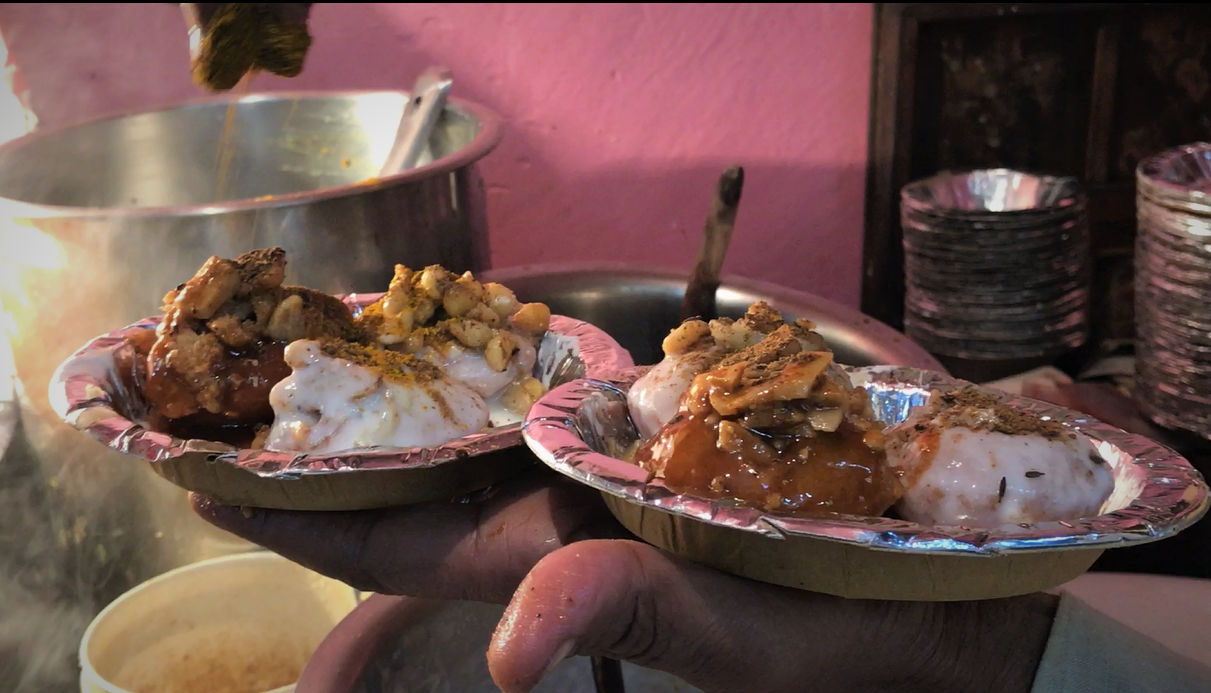
As a city that prides itself at its richness in the street food culture, Chandni Chowk is the place to go if you wish to taste some of the finest that the city has to offer. Located at Kinari Bazaar in Chandni Chowk, this joint tempts people from various parts of the city.
Tasty chatpata chaat is one of the many tasty dishes for which dilliwalla’s are ready to forget their diet and enjoy those tangy spicy flavors guilt free.
Since 1947, Padam chaat corner serves lip smacking treats like Papdi Chaat, Raj Kachori, Gol Gappe and many more. The shop is currently run by the 3rd generation of their family. Everything they sell are made at home from papri’s to even the masala sprinked over the papri’s. So one can be sure that they neither compromise with taste nor health.
The famous pani puri or gol gappa has many names and different ways in which it is served in different regions. Almost every Indian is familiar with concept of gol gappa, being easily available on the streets.
When you hear the word gol gappa, the only thing which comes in your mind is a crisp fried puri filled with a mixture of flavored pudina water, potato chunks and chickpeas but a mere visit to Padam Chaat Corner in Old Delhi is enough to change your mind.
One of their specialty is the bharwa gol gappe. First padamji makes a mixture of Bhalla, channa, chunks of boiled potatoes and masala which is homemade and has a wonderful fragrance of bhuna jeera, salt, peper, and some secret spices which he would not disclose and gives us an excuse to visit padam chaat corner again and again to have this gol gappa’s.
Then the mixture is stuffed in the fried crisp puri’s and then dipped in tangy tamarind chutney (saunth) and finished with yoghurt makes these gol gappa’s irresistible.
This small joint works in a hygienic environment and must visit place for all chaat lovers.
Location : Gali Barf Wali, Near Kinari Bazar, Chandni Chowk, New Delhi
Cost for Two : Rs 100 (Approx)










 Likewise, there is an old tea stall in the lane of Gali Qasmijan, right at the entrance of Phatak Luharu in Ballimaran. This tea stall was started by the late Haji Mohammed Farooq in 1969, carried on by his son the late Mohammed Yahya. It has been forty-five years since the pouring and serving of tea has been going on here. Now, the grandchildren, Mr. Farhan and Mr. Faizan, who are reporters with a newspaper, are still taking care of their family business. Their father, the late Mohammed Yahya, also owned a dairy shop named after his wife, Sabra and a hotel where the tea famously known as “Haji ki Chai” was served. Since the grandchildren did not have the same aspirations as their father, they gave up the place for rent and but have still kept the touch and name of their father through the tea stall.
Likewise, there is an old tea stall in the lane of Gali Qasmijan, right at the entrance of Phatak Luharu in Ballimaran. This tea stall was started by the late Haji Mohammed Farooq in 1969, carried on by his son the late Mohammed Yahya. It has been forty-five years since the pouring and serving of tea has been going on here. Now, the grandchildren, Mr. Farhan and Mr. Faizan, who are reporters with a newspaper, are still taking care of their family business. Their father, the late Mohammed Yahya, also owned a dairy shop named after his wife, Sabra and a hotel where the tea famously known as “Haji ki Chai” was served. Since the grandchildren did not have the same aspirations as their father, they gave up the place for rent and but have still kept the touch and name of their father through the tea stall.















